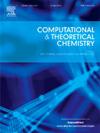Evaluation of Sb/Bi heterostructure as anode material for Li/Na/K-ion intercalation batteries: A DFT study
IF 3
3区 化学
Q3 CHEMISTRY, PHYSICAL
引用次数: 0
Abstract
The Sb/Bi heterostructure, a central focus in advanced metal-ion (AM) battery research, stands out for its substantial surface area and impressive capacity. Using density functional theory, we identify it as a highly promising anode material for lithium-, sodium-, and potassium-ion batteries. Our calculations demonstrate stable adherence of Li, Na, and K atoms to the Sb/Bi surface, with adsorption energies of −1.71 eV, −1.92 eV, and −2.4 eV, respectively, indicating favorable stability during the lithiation, sodiation, and potassiation processes. Incorporating Sb/Bi in electrodes displays exceptional conductivity, resulting in a lower anode voltage and good capacity. Theoretical capacities are 2106, 88.63, and 113.95 mAh/g for Li, Na, and K batteries. Notably, the Sb/Bi heterostructure exhibits thermal stability and metallic behavior. Open circuit voltage (OCV) values recorded for Li, Na, and K ions on the Sb/Bi heterostructure are 0.14 V, 0.20 V, and 0.17 V, respectively. Hirschfeld charge analysis provides insights into charge distribution, contributing to the understanding of Sb/Bi electrochemical behavior. This study highlights the potential of Sb/Bi heterojunctions, offering improved electrochemical performance and innovative pathways for experimental synthesis in the realm of advanced metal-ion batteries.

求助全文
约1分钟内获得全文
求助全文
来源期刊

Computational and Theoretical Chemistry
CHEMISTRY, PHYSICAL-
CiteScore
4.20
自引率
10.70%
发文量
331
审稿时长
31 days
期刊介绍:
Computational and Theoretical Chemistry publishes high quality, original reports of significance in computational and theoretical chemistry including those that deal with problems of structure, properties, energetics, weak interactions, reaction mechanisms, catalysis, and reaction rates involving atoms, molecules, clusters, surfaces, and bulk matter.
 求助内容:
求助内容: 应助结果提醒方式:
应助结果提醒方式:


